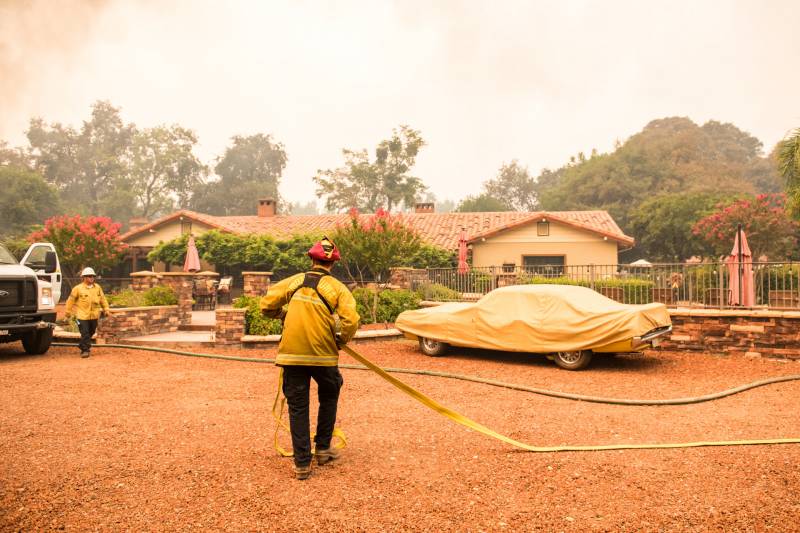Returning to your home after a wildfire can be tough — practically and emotionally.
Once a fire has burned through an area, many dangers remain: damage to buildings can make them unstable, debris and downed trees can block roads and downed utility lines pose serious electrical and other hazards. Fire officials also warn that the risk of flooding remains high for weeks and months after a wildfire, due to the amount of destroyed vegetation that once stabilized the soil.
For most residents, assessing the damage to their homes is top of mind.
“Some may not want to return because of the difficulty of seeing your home and possessions in ashes,” said Rob Goodman, who lost his home in the 2015 Valley Fire in Lake County. “When we first returned to our street, we were shocked to see every home gone. Seeing our home in ashes left us feeling numb.”
“If you do decide to return, I must urge great caution,” he added. “Your site will be toxic — containing everything from metals to plastics to wiring, plumbing, etc.”
Even for homes that are partially damaged or even seemingly intact, there are numerous precautions residents should take when returning after evacuation orders are lifted. Here’s a checklist based on guidance from Cal Fire, the Federal Emergency Management Agency (FEMA), the American Red Cross and individual county resources.
Assess the Area
Be aware of and use caution near damaged utility poles, trees weakened by fire and other debris that could shift or fall.
Buildings or parts of buildings that are standing may have sustained fire, smoke and water damage and be at risk of collapsing.
In some cases, county officials may have inspected structures and determined whether they’re safe — or not — to enter. If you have doubts about the structural stability of your residence, have it inspected by a qualified building inspector or structural engineer before entering.
Going Inside Your Home
Disasters like wildfires and floods create additional safety hazards, often leaving behind toxic chemicals, gas leaks, broken glass, exposed rebar or nails and tripping hazards.
- First of all, check for the smell of gas. Don't enter if you smell gas and call your utility company immediately.
- Inspect your home for hot embers or material that may still be burning — in gutters, attics, crawl spaces or even holes in the ground.
- Be aware of slippery floors or broken material that could stab or puncture you.
- Check the utilities:
- If there is any visible damage to gas lines, propane tanks or electrical wiring and meters, DO NOT attempt to turn them on or repair them. Contact your local utility immediately.
- If the utilities look undamaged, turn off power until you’ve completed your inspection.
- When you're ready to turn the power on, first turn off all appliances and make sure the meter is not damaged before turning on the main circuit breaker.
- Keep an eye out for sparks, broken wires, or cracks in the roof, foundation or chimney, as well as plumbing and sewage system damage, household chemical spills and damaged appliances.
- Do not drink water from the faucet until officials say it’s safe to drink. Water supply systems can be damaged or become polluted during disasters.
- Discard all food that’s been exposed to heat, smoke, fumes, soot or flood waters. If the power has been out, discard food that could be spoiling.
